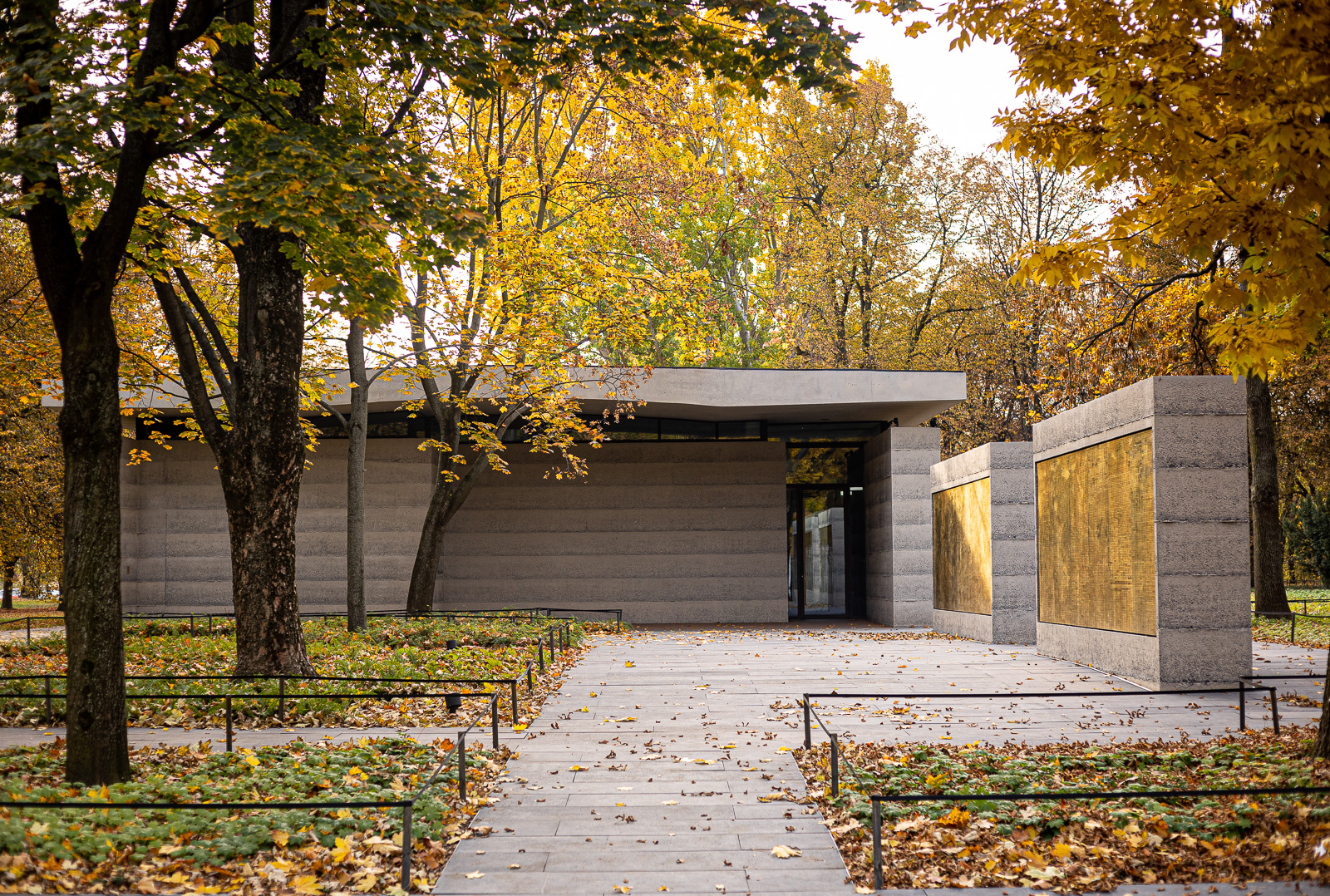About The Hall of Remembrance
The Hall of Remembrance at the Warsaw Insurgents Cemetery in the Wola district of Warsaw
The Hall of Remembrance at the Warsaw Insurgents Cemetery is a symbolic space dedicated to the victims of the 1944 Warsaw Uprising. Its construction was initiated by the Warsaw Insurgents Cemetery Social Committee chaired by Wanda Traczyk-Stawska. The foundation stone was laid in July 2021.
Tens of thousands of Varsovians who perished as a result of fighting and mass executions carried out by the German units are being commemorated in the two pavilions and on the Wall of Memory.
“The Hall of Remembrance will be a space encouraging visitors to reflect upon the consequences of violence, radicalism and military combat. Many victims buried in here, in the mound and in the mass graves, remain nameless. We would like the Hall to become a symbolic place. Remembering about the extermination of the civilian population is our joint responsibility today,”
said Mayor of Warsaw Rafał Trzaskowski.
The main spot in the Hall of Remembrance is taken by the Room of Testimonies and the Room of History. In the Room of History, we get acquainted with the history of the Warsaw Insurgents Cemetery—the largest military necropolis in Poland—from 1945 until the present day. The Room of Testimonies will house a multimedia installation by Krzysztof Wodiczko, a visual artist of world renown, lecturer at the Harvard Graduate School of Design and a theoretician of art.
“We want the Hall of Remembrance to become not only a place aimed to preserve the memory of the victims of the Warsaw Uprising, but also a space for debates on conflicts and the processes of dialogue, commemoration and living memory. It is here that adults, children and youth will be able to develop their attitudes of respecting others, of tolerance, mutual understanding and community,”
says Karolina Ziębińska-Lewandowska, director of the Museum of Warsaw.
Michał Wójcik, a journalist and historian, is the Hall of Remembrance curator. He used to work for ‘Radio Zet’ radio station and for the Przekrój magazine; for many years, he was editor-in-chief of magazines Focus and Focus Historia. He has written scripts for programs on history and historical films. He is co-author of extended interviews with the heroes of the Second World War: Stanisław Likiernik and Stanisław Aronson, members of Kedyw [acronym for “Directorate of Diversion”, a Home Army unit which conducted active and passive sabotage and propaganda operations against Nazi German forces and collaborators], and with Lucjan Wiśniewski, official liquidator of the enemies of the Underground State. In Baronówna, he presented the tale of the last generation of the Kronenbergs—a Warsaw-based family of bankers and philanthropists. His monograph titled Treblinka ’43 was awarded Teresa Torańska Newsweek Prize for the Best Book of 2018 and was translated into several languages. Recently, he has published Błyskawica, an extended interview with Wanda Traczyk Stawska (W.A.B. Publishing House, 2021).

fot. Jakub Celej
The complex was designed by Piotr Bujnowski studio, with the participation of Kalina Jędrak, Maciej Koczocik, Krzysztof Makowski and Martyna Rowicka. It is a concrete, monolithic volume with a cut-off flat roof which seems to levitate above the building. The designers have referred to the process of striving to perpetuate the memory and identity of the fallen residents of Warsaw by choosing materials that change with time—they age, remember and recall.
One may enter the Hall of Remembrance from the side of the Cemetery, from the park, and from Wolska Street where the smaller pavilion which accommodates a bookstore, a café and an information point is located.

